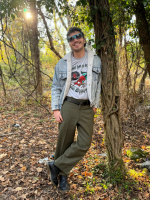Baltimore City officials are eager to expand an anti-violence program that’s been piloted over the past year to tackle the underlying reasons for crime instead of just punishment taking it citywide by 2024. Officials say they’ve achieved some success using a mixture of life coaching, therapy and housing assistance to reduce violent crime in the pilot area, Baltimore’s Western police district. The program, known as the Group Violence Reduction Strategy, refers to cohorts of individuals living in city neighborhoods who may influence each other’s behavior, ideally to reject violent behavior as a larger community.
Baltimore City Mayor Brandon Scott says the program will expand into the Southwestern police district in early 2023.
There are nine police districts in all. Historically, people living in the Southwestern district experience the most violent crime across Baltimore, police said. The Central police district would be next and then the remaining six districts in the coming years.
Baltimore Police Department data shows that there was a 33.8% drop in total monthly homicides between 2021 and 2022 in the Western district where the strategy has been piloted for the past year. That is the most significant improvement of homicides of all the districts, police data shows.
There has been more than 300 homicides across Baltimore City each year for the past eight years, police data shows.
The program focuses on community issues to cut down on violence, attacking the root of violent crime, rather than just incarcerating people who commit those offenses.
“Baltimoreans deserve strategies that simultaneously deliver results and break the cycle of violence that continues to plague our communities by treating its root causes while also holding those who perpetrate violent crimes accountable,” Scott said.
Residents living in the Western district were offered free cognitive behavioral therapy during the program. Talk therapy offers residents tools to work out their issues without physical violence and encourages people to sit with their feelings and resolve conflict peacefully.
Beyond that, residents were offered emergency housing relocation, housing assistance, education assistance and help earning licensure for future jobs.
This is not the first crime reduction plan in Baltimore. A program that began in the 1990s and then again in 2014 known as Ceasefire has been underway for years.
Ceasefire efforts waned as the program was expanded even though the previous program also reduced violent crime in the Western district.
Scott’s administration is trying to avoid the same fate.
“We're going to make sure that during this implementation that we maintain a centralized management schema,” said Shantay Jackson, the Mayor’s Neighborhood Safety and engagement director said in a briefing on Monday. “It's going to be critical to the success of this work and making sure that capacity needs and resource allocations are ones that we account for and that the implementation maintains the quality that it is demonstrating right now in the western district.”
The Baltimore City Police Department is wary that such an expansion of the Group Violence Reduction Strategy would be feasible at a time when there are not enough officers on the ground already.
Police Commissioner Michael Harrison said the force is already thin and would need to stretch to create more specific units. Harrison added that the strategy will take time to catch on with officers.
“This is a paradigm shift,” he said. “We have more, more officers who will be trained as we bring on new officers and officers retire out and promote out that we think about this in a very different way. Every opportunity is one for us to communicate and interface with young men to get them to accept our help and have a pathway away. That's something very different for an officer to do.”







